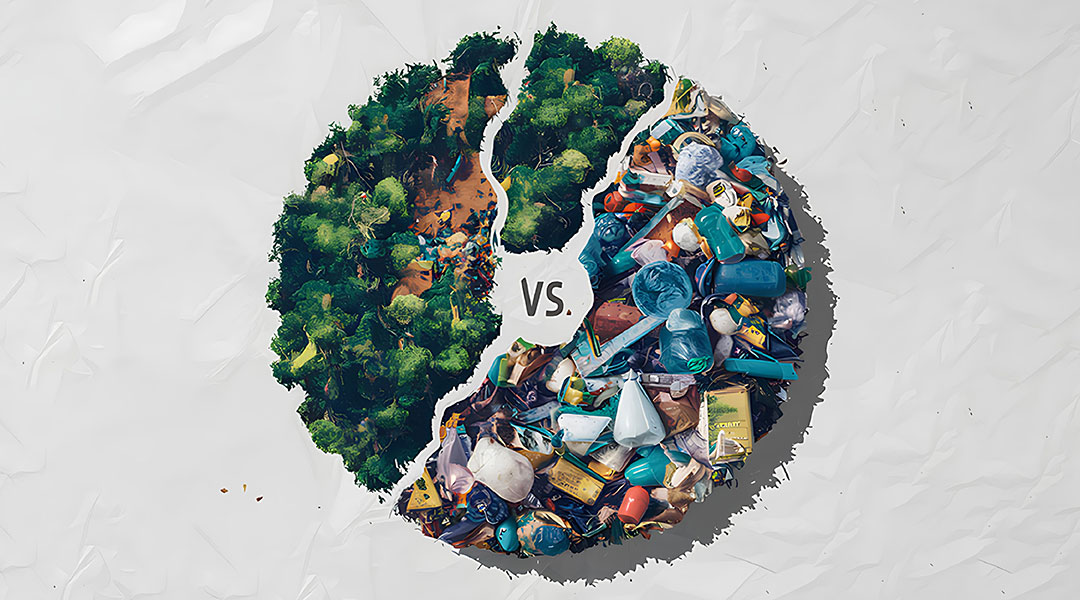
Greenwashing, this exploitative behavior is characterized by corporate presentation or inflation of an environmental commitment and marketing tactics designed to implement sustainable practices (over the top per). When consumers are searching for more transparency and environmentalism, now more than ever it will be important to understand the way of learning how to tell the real sustainability from greenwashing.
Greenwashing is insidious that attempts to mislead consumers as it exploits the genuine desire to be environmentally responsible. Businesses, for instance, use this approach in various ways such as, general environmental promises, selective disclosure of positive information, and the presentation of ambiguous, suggestive or misleading images and text claiming environmental involvement, but literally not anything about environmental entanglement. These methods generate the sensation of stability that is, in turn, used to deceive pro-environment consumers thereby purchasing or buying in an environmentally attractive manner.
As a result, the environmental and economical effect of sham greening runs deep into fields of marketing fraud, although this is only the first step. If consumers are guided to actually believe unsubstantiated sustainability claims, it can lead them to unconsciously support the sustainability phoney and, in turn, support companies that are destroying the Earth. Layering on top of this, it may lead to catastrophic devaluation of brand/environment initiatives among consumers. Furthermore, greenwashing creates an unfair playing field, in which companies offering little but impressive claims are at an advantage over genuine sustainable companies who have to prove who they actually are as opposed to lies told by companies who deliver little.
Identifying greenwashing requires a critical and nuanced approach. Consumers and stakeholders must adjust complex methodologies for the validation of corporate sustainability claims. For example, this involves the call to shift away from simple marketable messages and consider evidence for environmental activism. The primary sign of authentic sustainability is the openness of reporting, provision by third-party certification, determination of definable environmental targets and a systemic approach to the whole supply chain and operational ecosystem.
Companies that are truly serious about real sustainability need to reach a holistic system where environmentalism is at the core of the evolutionary structure of operational management. This is the next level after individual “greening”” works or “green” campaigns, etc. True sustainability demands a fundamental, intrinsic shift in the way-things-are-done from the perspective of business-as-usual, encompassing supply chain management, product design, waste minimization, energy saving, and, above all, long-term environmental assessment. Firms have to be disciplined and make potentially large economic compromises to sustainable tech and practice technologies and practices, even when these targets do not yield an immediate financial return.
This regulatory and legal one is also evolving and getting stricter for the sake of a better sustainability (TSI). States and other entities are implementing methods for characterization and reporting of EA (environmental effect). Therefore, these new regs represent challenges and new challenge as well as opportunities for commercial entities. Companies which are proactively establishing their sustainability strategy with strong transparent frameworks will be in a more robust position to meet both changing environmental legislation and the rising demands of consumers.
Technology plays a crucial role in enabling authentic sustainability. Advanced tracking systems, blockchain technologies, and powerful data analytics empower environmental impact measurement and reporting in unprecedented ways. These tools enable organisations to generate a greater quantity of open and reproducible sustainability reports, and hence move away from marketing rhetoric and into action. AI and machine learning are also used to maximize resource efficiency, reduce waste, and implement environmentally sound business.
Educational programmes are a powerful means to address greenwashing, and more broadly to deliver real sustainability. Today, consumers, investors, expert bodies, and the public cannot disengage from the issue of environmental concern and corporate sustainability practices. This is a learning, critical thinking, challenge process, as far as the dishonest corporate propaganda is concerned. Research, analysis and public engagement, and media, and environmental interest group are all equally important in contributing the right level of understanding and awareness that is allowing us to think about sustainability on a demonstrably and critical level.
The financial implications of greenwashing are becoming increasingly significant. Investors and financial institutions are rethinking their standardized Corporate Environmental Performance methodology towards becoming more customized. Companies that have been found guilty of having engaged in greenwashing are exposed to several reputational risks, to legal action, and lose attractiveness as an investment. On the contrary, companies which can develop, and maintain, a culture of sustainability have the possibilities of adopting new modes of financing, to develop greater consumer loyalty and can produce long-term system cost reductions through optimised use of resources.
Moving forward, overcoming greenwashing needs to be a joint effort from consumers, companies, governments and civil society. This is dependent on consensual interpretation of transparency, scientific effectiveness, and fundamental environmental risk. Genuine sustainability is not a buzzword, but rather a fundamental change in the relationships between companies and the natural world. Through the evolution of more sophisticated types of environmental responsibility, we can construct a more green, equitable global economic framework.
Post Comment